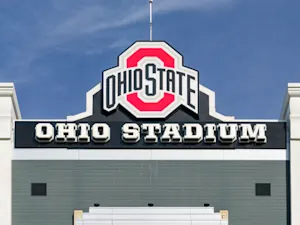
Shocking Secrets Fast-Food Companies Don't Want You to Know
Fast-food is convenient, cheap, and delicious, but behind the counter lies a world most customers never see. From questionable practices to insider tips, these secrets might make you think twice before your next drive-thru run.
Why Everything Tastes Like 'Fast Food'
Ever wonder why every item in a fast-food meal seems to taste similar, whether it's the burger, fries, or even the milkshake? That's no accident — it's carefully engineered. Fast-food is designed to hit all the right notes for your taste buds, balancing sweet, salty, and bitter flavors to keep you eating. This deliberate calibration appeals to the hypothalamus, the part of your brain that craves variety in flavors. By satisfying all these cravings at once, fast-food ensures you stay hooked, leaving no room for thoughts of healthier options.
Supersized Portions, Supersized Problems

Fast-food today is significantly more calorie-dense than it was in the 1980s. Research published in the Journal of the Academy of Nutrition and Dietetics revealed that entrées at major fast-food chains have grown in size, packing an extra 90 calories on average since 1986. Coupled with the fact that people consume twice as many calories from restaurants as they did 30 years ago, this trend highlights how portion sizes and calorie counts have quietly escalated over time, making it easier than ever to overeat.
Fast-Food's Speed Trap to Overconsumption

Fast-food is designed for speed, and that might be costing you more than just money. It takes about 20 minutes for your brain to register that you're full, so the quicker you eat, the more likely you are to over consume before realizing you're stuffed. Adding to the problem, fast-food typically requires little chewing, encouraging rapid eating. A study in the American Journal of Clinical Nutrition found that the heaviest eaters chewed an average of 11.9 times per bite, while thinner individuals chewed 14.8 times. Slowing down and chewing thoroughly not only helps prevent overeating but can also give your metabolism a boost.
Not Everything Is as Fresh as It Seems

Fast-food chains use holding cabinets to keep cooked food warm until it's served, with timers indicating when it should be discarded. However, employees often reheat food instead of tossing it, meaning you might not be getting the freshest meal. To avoid this, plan your visit during peak hours, typically between 11 a.m. and 1 p.m. or 6 p.m. and 8 p.m., when high demand ensures freshly cooked items. Outside of these times, your meal might not be as fresh as you'd hope.
Special Orders Could Save Your Meal

Ever noticed how a burger made to order seems hotter and fresher? That's because it probably is. Fast-food employees reveal that custom orders require fresh preparation, so asking for "no pickles" or "extra lettuce" could guarantee a fresher meal. It's a simple trick to avoid items that may have been sitting in a warming drawer.
Chemically Cleaned and Painted Meat

Fast-food meat often undergoes chemical treatments to ensure safety, but it might not be appetizing to think about. Compounds like ammonium hydroxide are used to combat bacteria such as E. coli and lower acidity levels, creating an environment hostile to pathogens. While the USDA deems this practice safe, the thought of chemically cleaned meat may give some diners pause. And those enticing grill marks on your burger? They're often just factory-made illusions, either branded or painted on, with added smoke flavoring to mimic the taste of a flame-grilled patty.
Ice Machines and Soda Fountains Can Be Gross

Think twice before filling up at the soda fountain — fast-food ice machines and drink dispensers are often a breeding ground for mold and bacteria. Shockingly, nearly half of soda fountains tested in a 2010 study contained coliform bacteria, commonly linked to fecal matter. Researchers believe the culprits could be dirty rags or unwashed hands. Want to dodge the hidden germs in your cup? Stick to bottled drinks for a cleaner sip.
Your 'Healthy' Choices May Be Anything But

Fast-food salads, oatmeal, and wraps may seem like healthier options, but they often pack just as many calories and fat as fried foods. Salads are typically drenched in calorie-heavy dressings, and oatmeal is often loaded with added sugar. Surprisingly, some fast-food salads, like McDonald's® Southwest Grilled Chicken Salad, even contain propylene glycol—a chemical considered safe to eat but also found in products like antifreeze and personal lubricants.
Fast-food may be convenient, but behind its tempting flavors lies a world of engineered tastes, hidden chemicals, and reheated meals — all crafted with precision to maximize profits, not your health. Next time you're in the drive-thru line, take a moment to think: is the convenience really worth it? Sometimes, the better choice is to slow down, enjoy real, wholesome flavors, and leave the fast-food gimmicks behind.
References: 23 Secrets Fast Food Employees Don't Want You to Know About Your Food | 33 Things Your Fast Food Worker Isn't Telling You
























